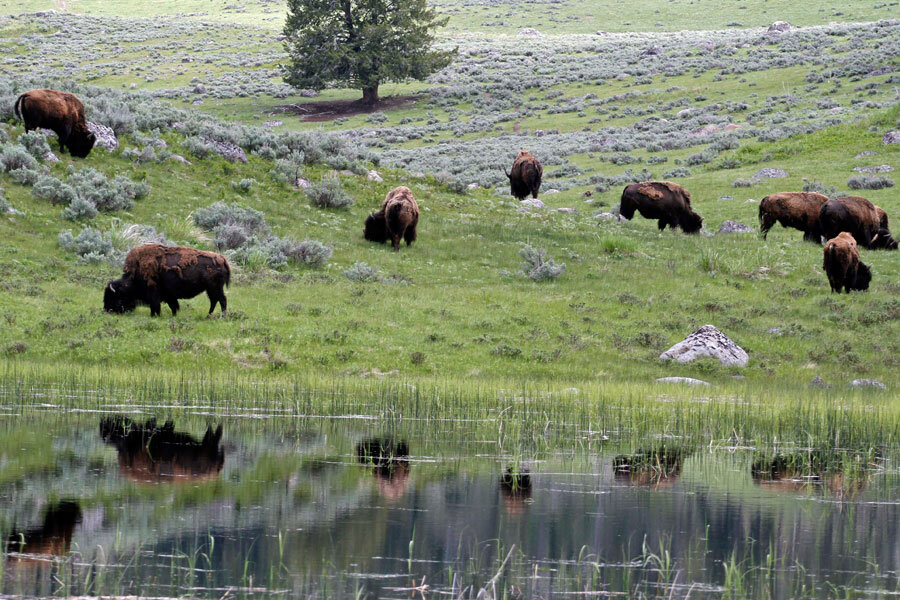Why Yellowstone Park must kill 1,000 wild bison this winter
Loading...
Yellowstone National Park is proposing to kill 1,000 bison, also known as buffalo, this winter.
Roughly 5,000 bison roamed Yellowstone this summer, but officials fear a cold winter could drive herds into southwestern Montana. A controversial agreement struck in 2000 between the state of Montana and the federal government sanctions this mass slaughter; aimed at preventing herds from imposing infection and grazing competition upon local livestock.
Officials are planning on killing mostly calves and females to reduce the population’s reproductive rate.
Some 30 to 60 million buffalo once roamed the American West, according to the US Fish and Wildlife Service, but severe hunting during the 1800s decreased the population to 325 individuals. Herds of Yellowstone bison have since reached record levels, causing Montana farmers to stress over their winter migration.
The kill quota varies by year, but this year’s goal of 1,000 would be the largest single elimination since 1,600 bison were killed during the winter of 2007-08.
While some Native American tribes support the killing, others say the kill quotas are reminiscent of past US extermination campaigns that killed a majority of tribes and herds alike.
“Killing these buffalo is shameful,” Jimmy St. Goddard, the spiritual leader of the Blackfeet Tribe in Montana, told Reuters.
Some officials say the Interagency Bison Management Plan is outdated, and the park needs a new method for population control.
“We believe we’ve outgrown it – new data about general biology and disease prevalence are available, and public opinion is shifting toward more tolerance for bison and Montana,” the National Park Service website explains in response the current management plan. “We need a new paradigm that accommodates larger herd sizes and allows bison to move more freely on suitable public lands in the Greater Yellowstone Ecosystem.”
But despite criticism, park officials say they don’t have a choice.
“Through the legal agreement the National Park Service has to do this,” said Yellowstone spokeswoman Sandy Snell-Dobert. “If there was more tolerance north of the park in Montana for wildlife, particularly bison as well as other wildlife, to travel outside the park boundaries, it wouldn’t be an issue.”
“They are a hardy species,” adds Stephanie Adams with the National Parks Conservation Association in an interview with the Associated Press. “But until there’s more room for bison to range beyond the park boundary, we’re going to have to rely on larger numbers of bison being sent to slaughter.”
Since the 1980s, more than 6,300 bison have been sent to slaughter, with officials removing more than 737 animals last year alone.
This report contains material from Reuters and the Associated Press.






